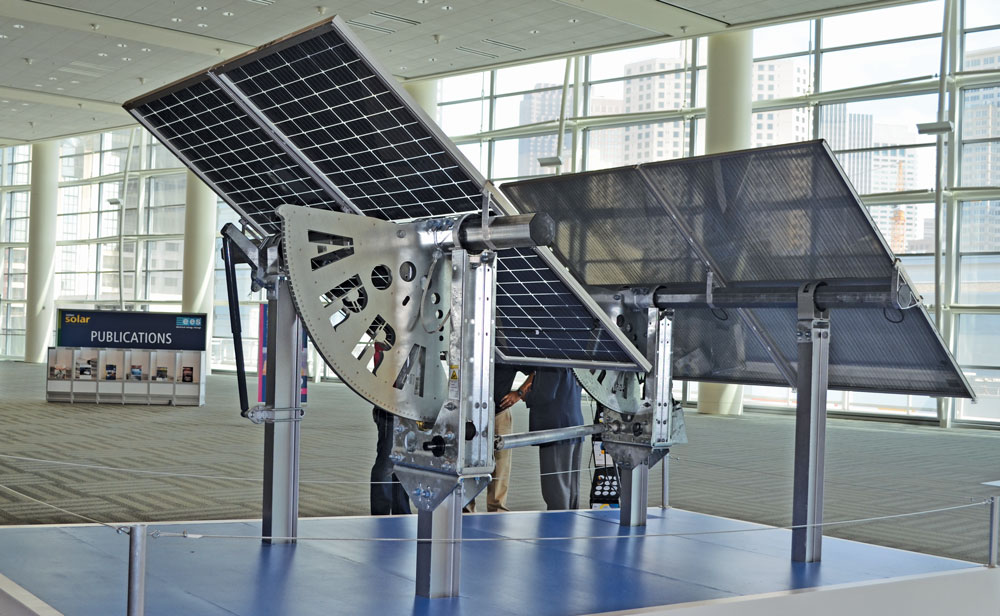During high wind events, utility-scale solar assets are often automatically tilted to a stowed position to prevent damage and downtime from repairs. High wind can cause solar panels to vibrate and rotate, leading to microcracking, twisting, or shattering of panels.
However, stowing solar trackers can lead to a loss of production as they do not follow the sun in an active stow system.
Array Technologies, a leading provider of solar tracker systems, worked with independent engineering and design firm DNV to study an alternative method to active stowing called passive stowing. The analysis focused on evaluating the energy losses associated with various tracker wind stow methods and considered multiple variables, including wind velocity stowing thresholds, wind direction, dwell time, stow exit wind velocity threshold, stow angle, and stow direction.
In Array’s passive stow system, most of the rows track normally when stow is triggered by a wind event. Array modeled a wind event with DNV, showing that only the exterior rows of the solar array, and 17% of the interior rows were stowed out of alignment of normal tracking. Meanwhile, the active stow system moved the entire array out of tracking position, did so at a lower wind speed, and did not use wind direction as a criteria for stowing.
The study found significant differences in energy production losses between passive and active stow systems. Passive stowing was found to lead to a 0.05% annual energy loss, while conventional active stowing led to 2.8% average annualized energy losses. The DNV study showed that conventional active stow systems can lead to as much as 4.3% annual energy losses.
“Weather events costing $1 billion or more have escalated dramatically, with wind events now ranking as the second highest cause of insurance claims in the last three decades,” said the report. “Array’s passive wind stow technology not only mitigates these risks by maintaining higher operational efficiency during wind events but also enhances predictability in energy production forecasts.”
Array Technologies’ DuraTrack and OmniTrack products both employ passive stow technology.
This content is protected by copyright and may not be reused. If you want to cooperate with us and would like to reuse some of our content, please contact: editors@pv-magazine.com.









By submitting this form you agree to pv magazine using your data for the purposes of publishing your comment.
Your personal data will only be disclosed or otherwise transmitted to third parties for the purposes of spam filtering or if this is necessary for technical maintenance of the website. Any other transfer to third parties will not take place unless this is justified on the basis of applicable data protection regulations or if pv magazine is legally obliged to do so.
You may revoke this consent at any time with effect for the future, in which case your personal data will be deleted immediately. Otherwise, your data will be deleted if pv magazine has processed your request or the purpose of data storage is fulfilled.
Further information on data privacy can be found in our Data Protection Policy.